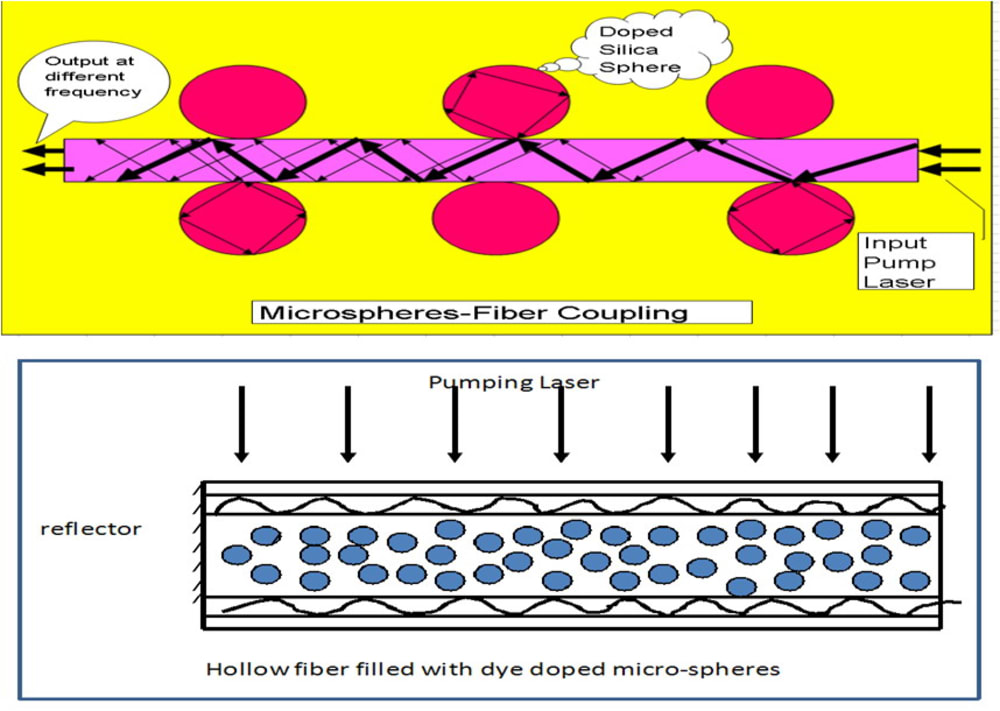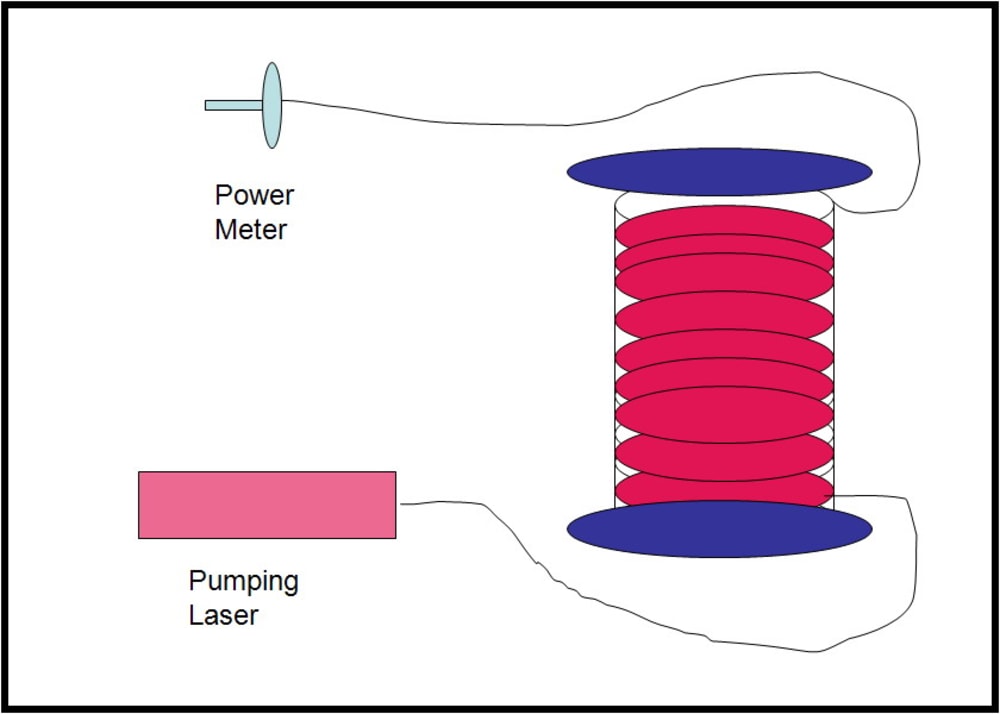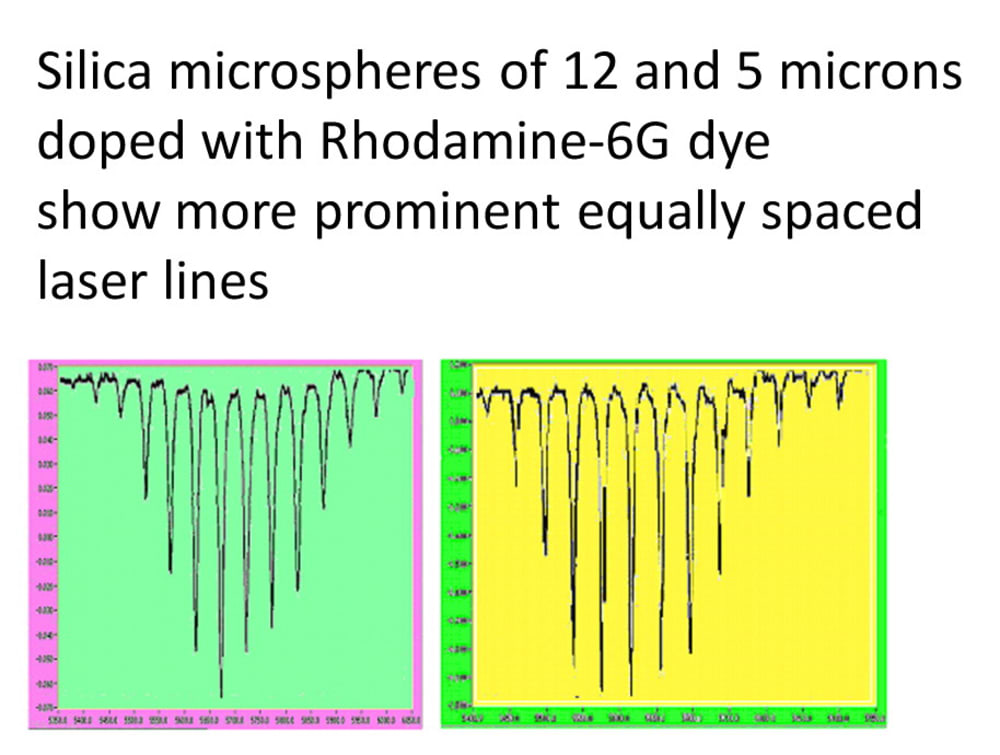
The invention provides a single microspherical fiber system which can generate multiple laser outputs. It includes a laser beam at the input end for pumping the system and an output end for the desired laser lines. Pluralities of doped microspheres are adhesively attached to the fiber or inserted into a hollow fiber. The laser beam excites the doped microspheres to generate an output laser beams which are extracted at the output end of the fiber. In one embodiment the fiber is solid and in another embodiment the fiber is hollow.
The multi-lines, which the laser emits make it ideal for multiple applications in space and on the ground. In space it can be used for surface-chemical analyses and detection of organic compounds and biomarker gases on other planets as well as for remote measurements of atmospheric aerosols, clouds, ozone layer, water vapor, carbon, and methane, wind measurements, surface topography, mapping vegetation, and measuring subsurface ocean layers. On the ground, it can be used for phone and internet fiber communication, movie industries, printing, airports biological sensors, national security agency applications, computers, and multiple defense applications. It is durable, light weight, rugged, inexpensive and flexible to produce wide range of laser lines and of wide range of powers.
The glass microspheres are doped with specific dopants to generate the desired laser lines. The spheres are adhesively attached to the solid fiber or inserted into a hollow fiber and pumped by a laser source at one end of the fiber (Illustration-1). A fraction of the pumping beam enters the microsphere and undergoes multiple internal reflections until such time that sufficient energy has been built up that a laser beam exits the microsphere, at different wavelengths than the pumping beam. The surface of the microsphere acts as an optical cavity that provides feedback at specific wavelengths. The fiber with the spheres is wrapped on a pulley with the two ends of the fiber are free for pumping and collecting the outputs (Illustration-2). The microsphere produces a plurality of output laser lines. Illustration-3 shows the output from 5 ?m microspheres doped with Rhodamine 6G and pumped with a 532 nm source from a Nd:YAG laser. It is seen that for the 5 ?m microspheres a plurality of laser output wavelengths from around 5490 ? to around 5980 ? are produced. Different lines can be produced by changing the dopant material.
-
Awards
-
 2010 Top 10 Most Popular
2010 Top 10 Most Popular
Like this entry?
-
About the Entrant
- Name:Hossin Abdeldayem
- Type of entry:individual
- Hardware used for this entry:Silical Fiber, doped Silica microspheres, Diode lasers, power meters, spectrometer, osciliscope, hollow fibers.
- Patent status:pending








